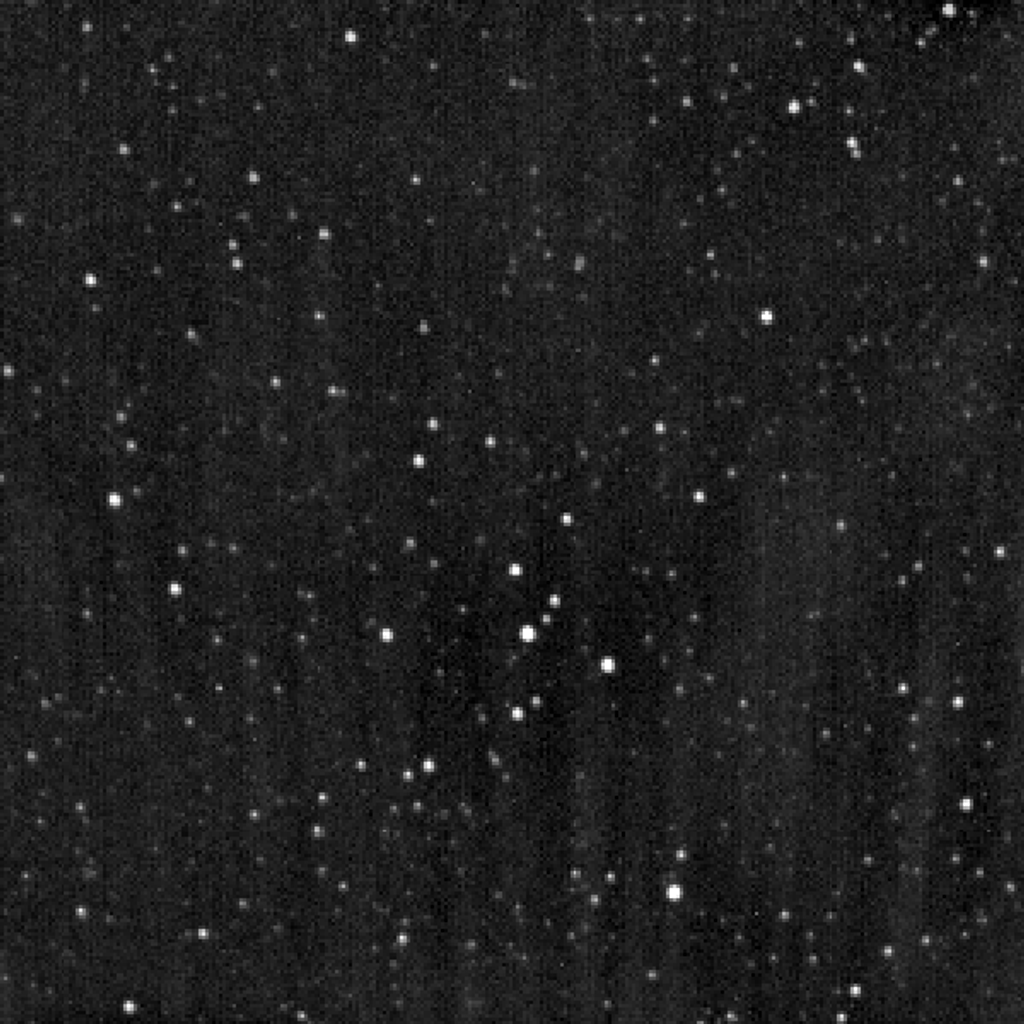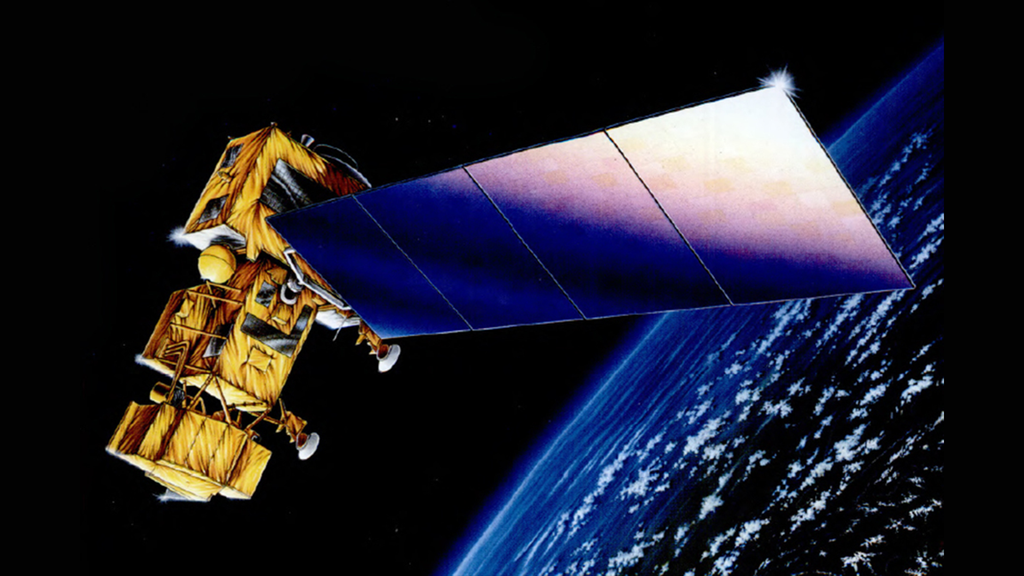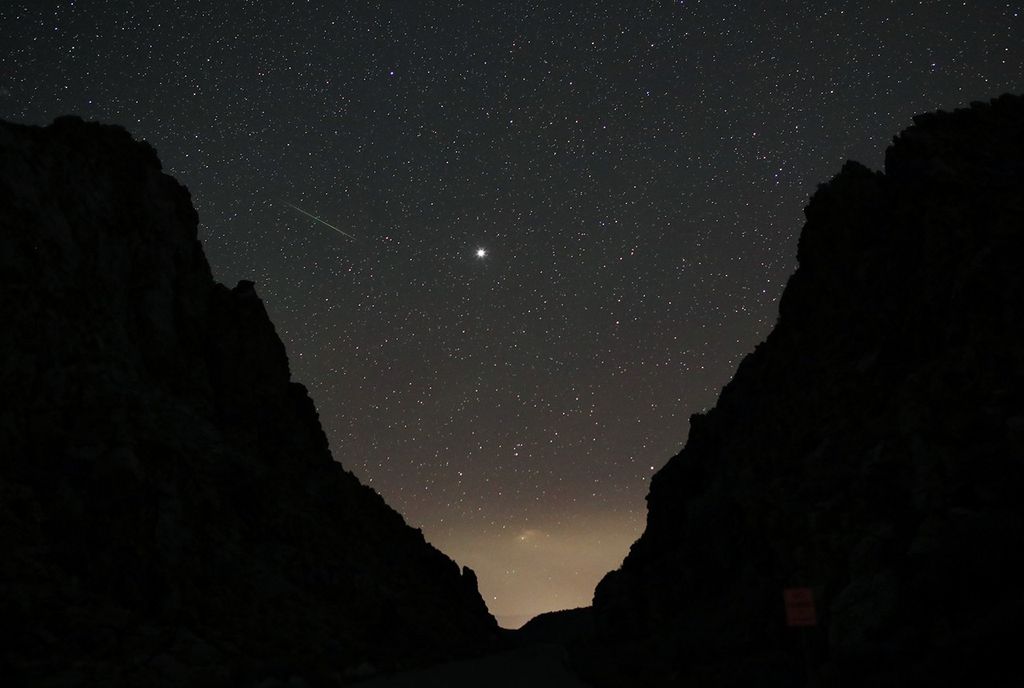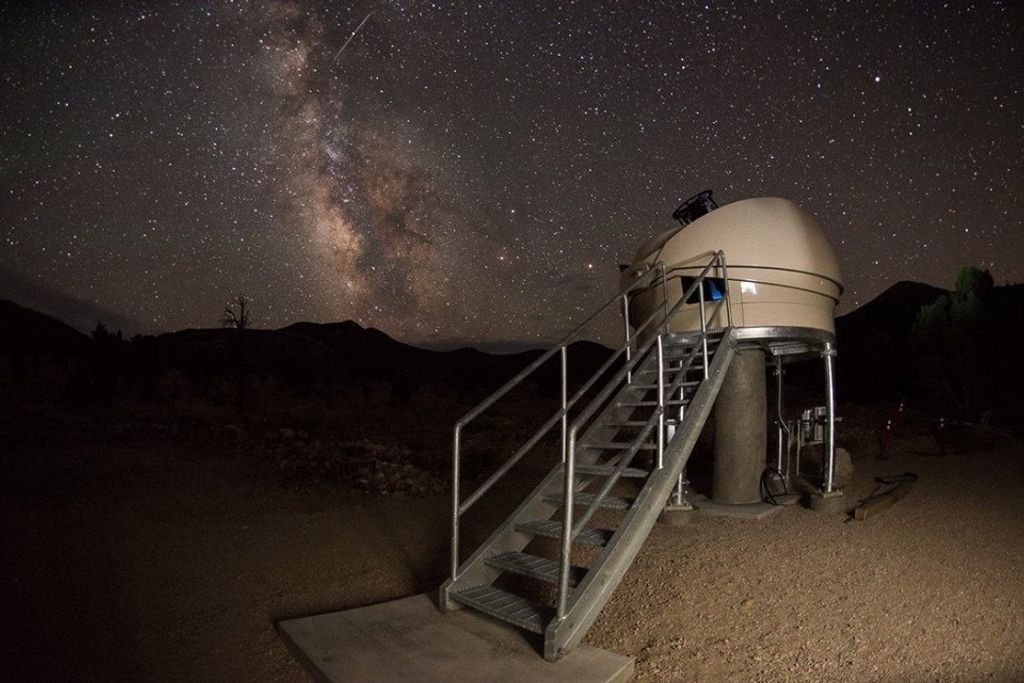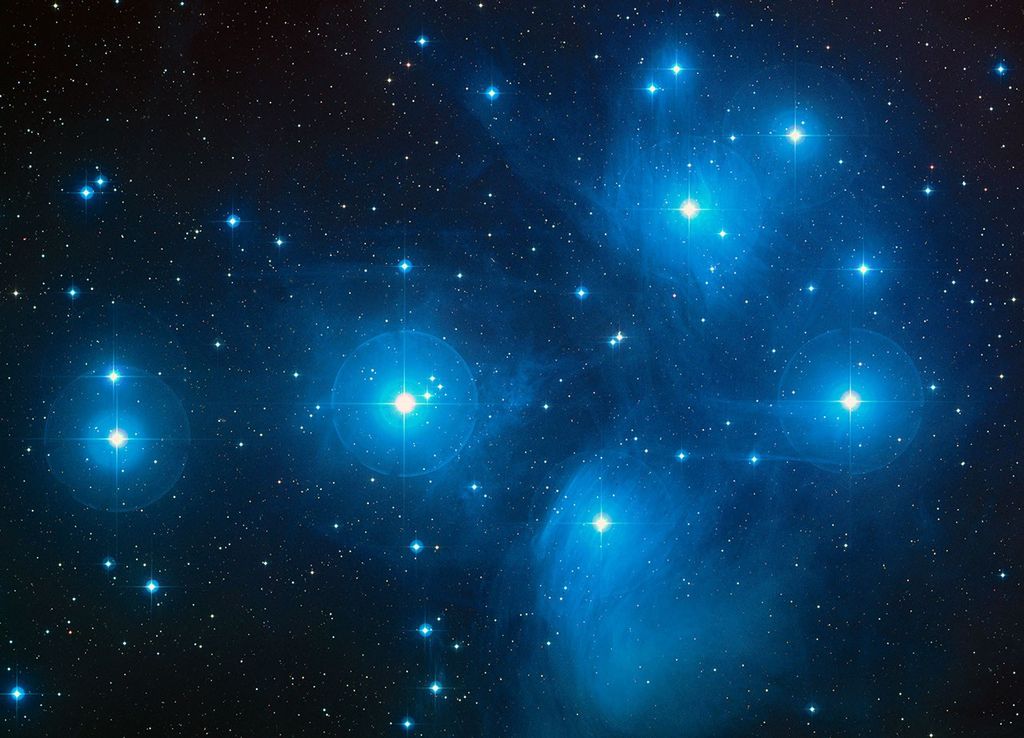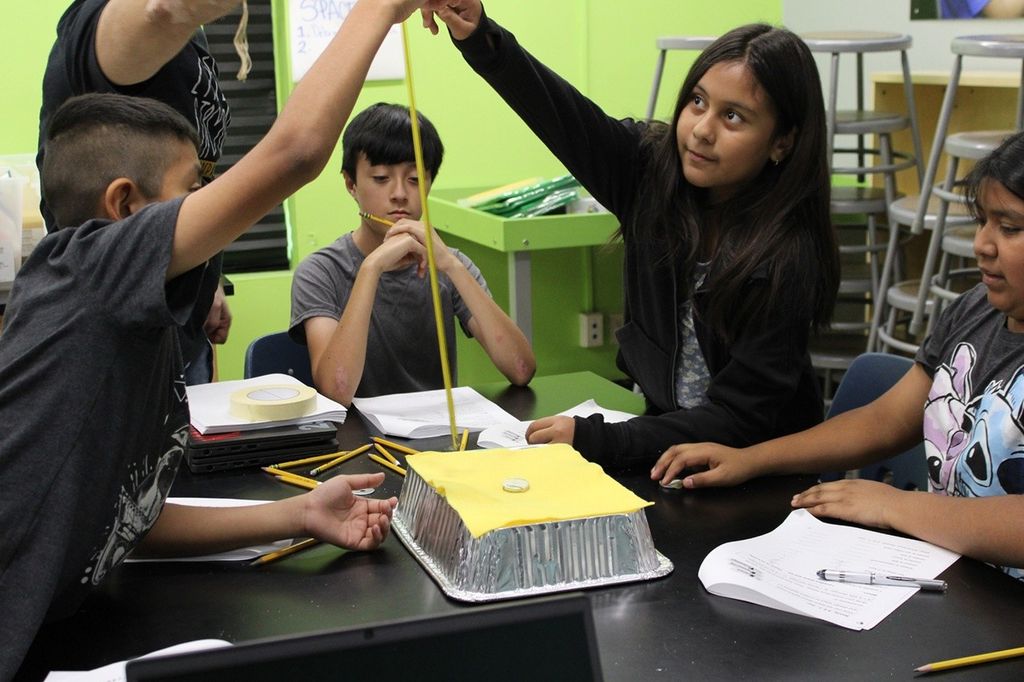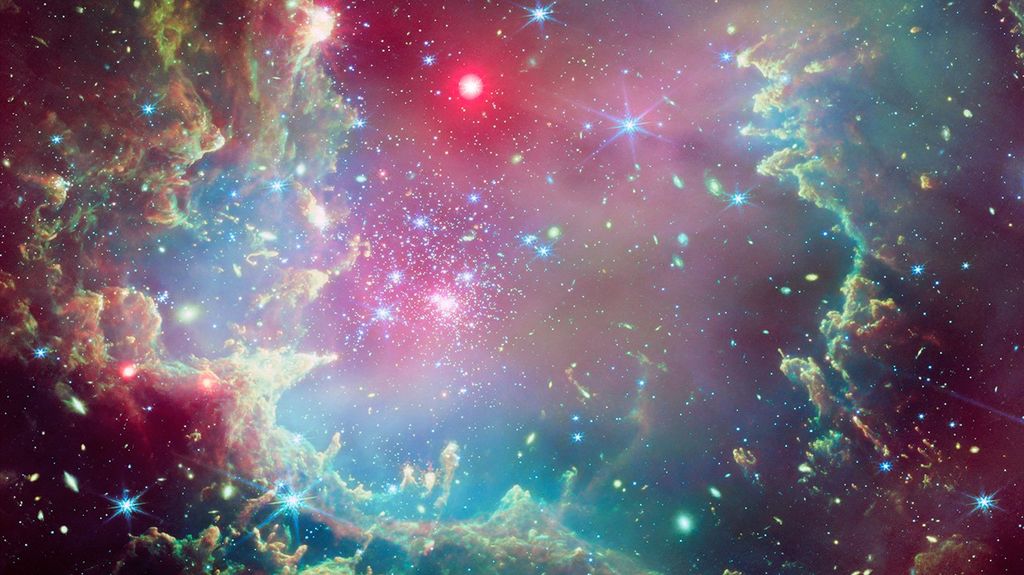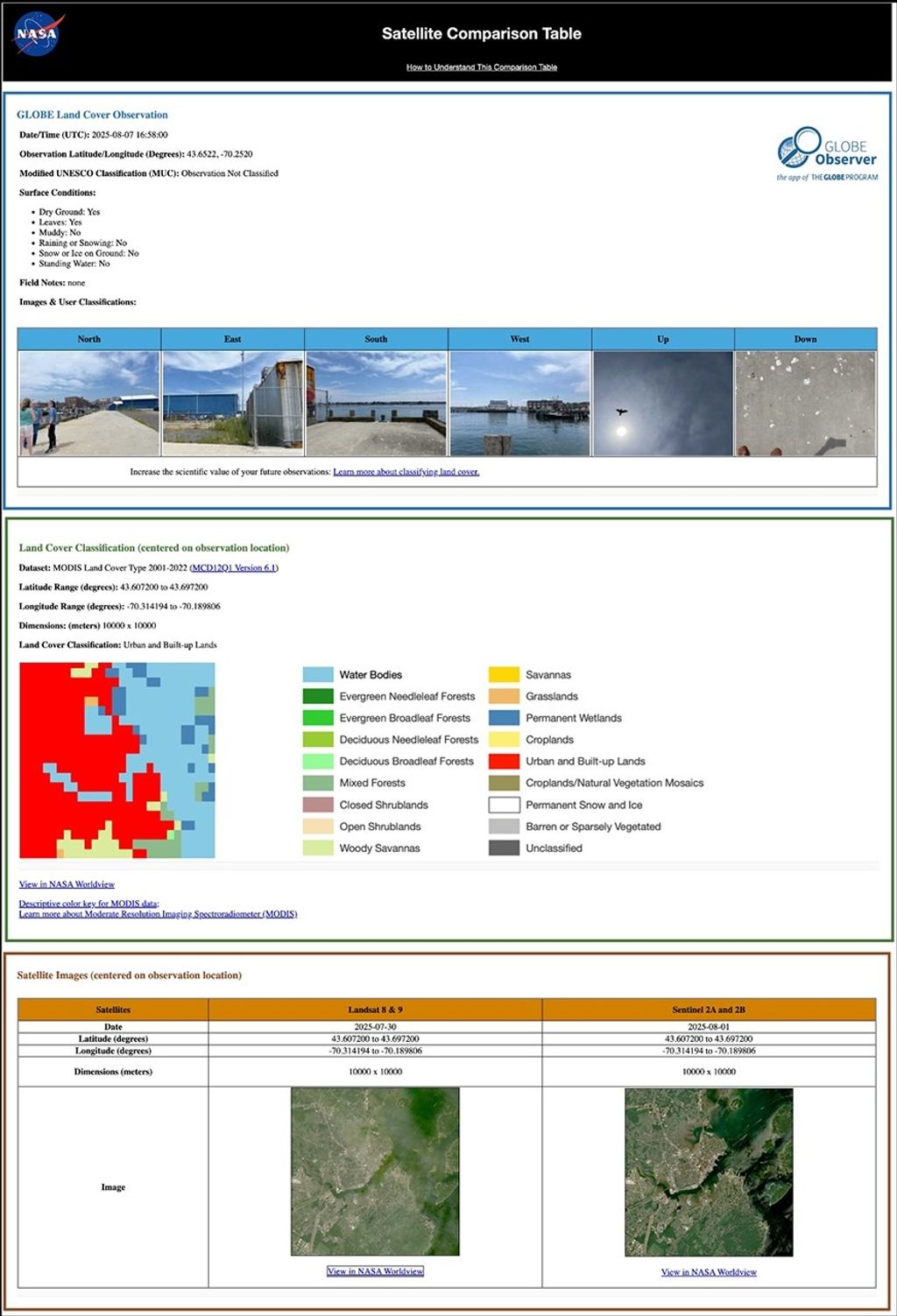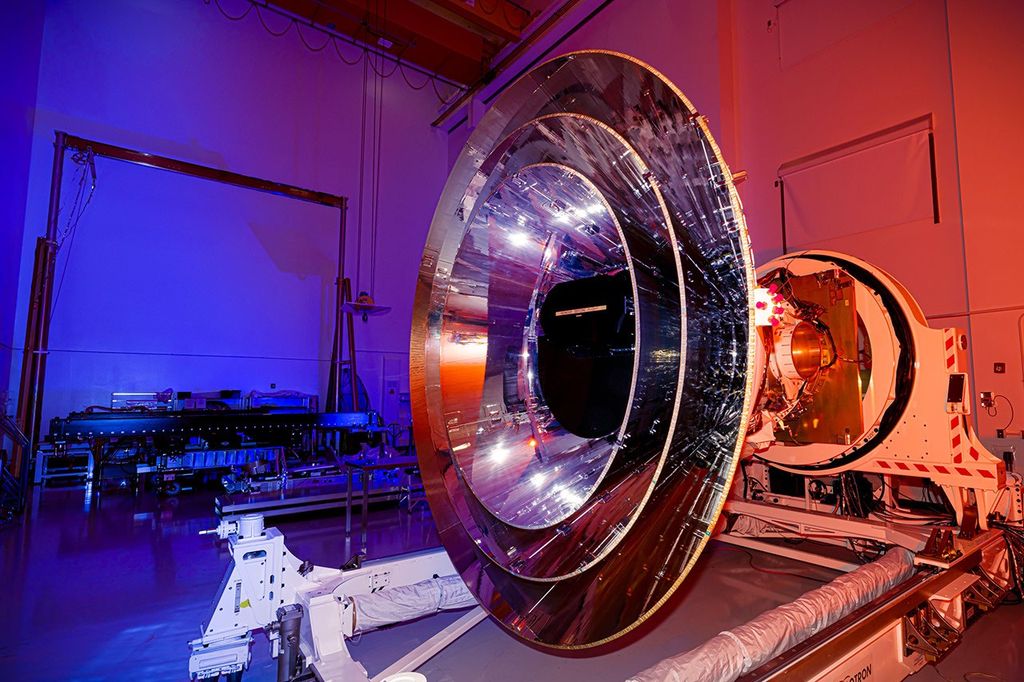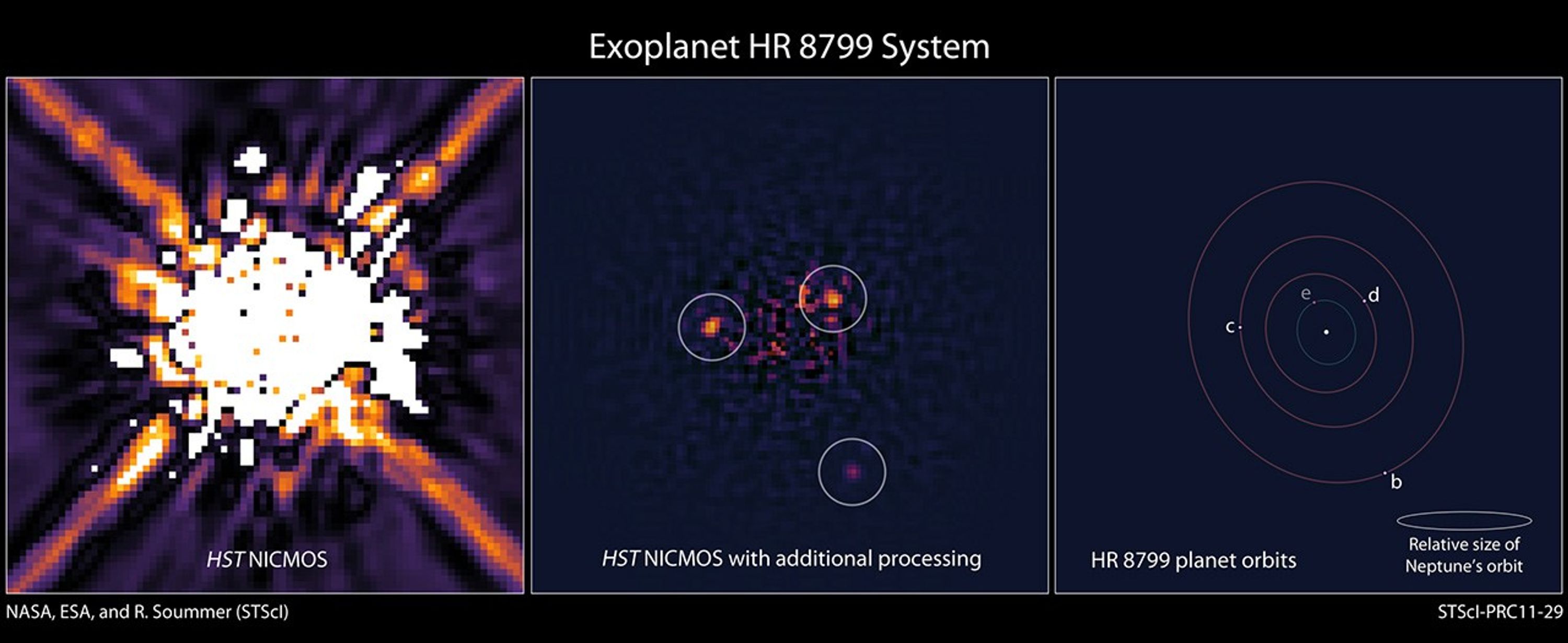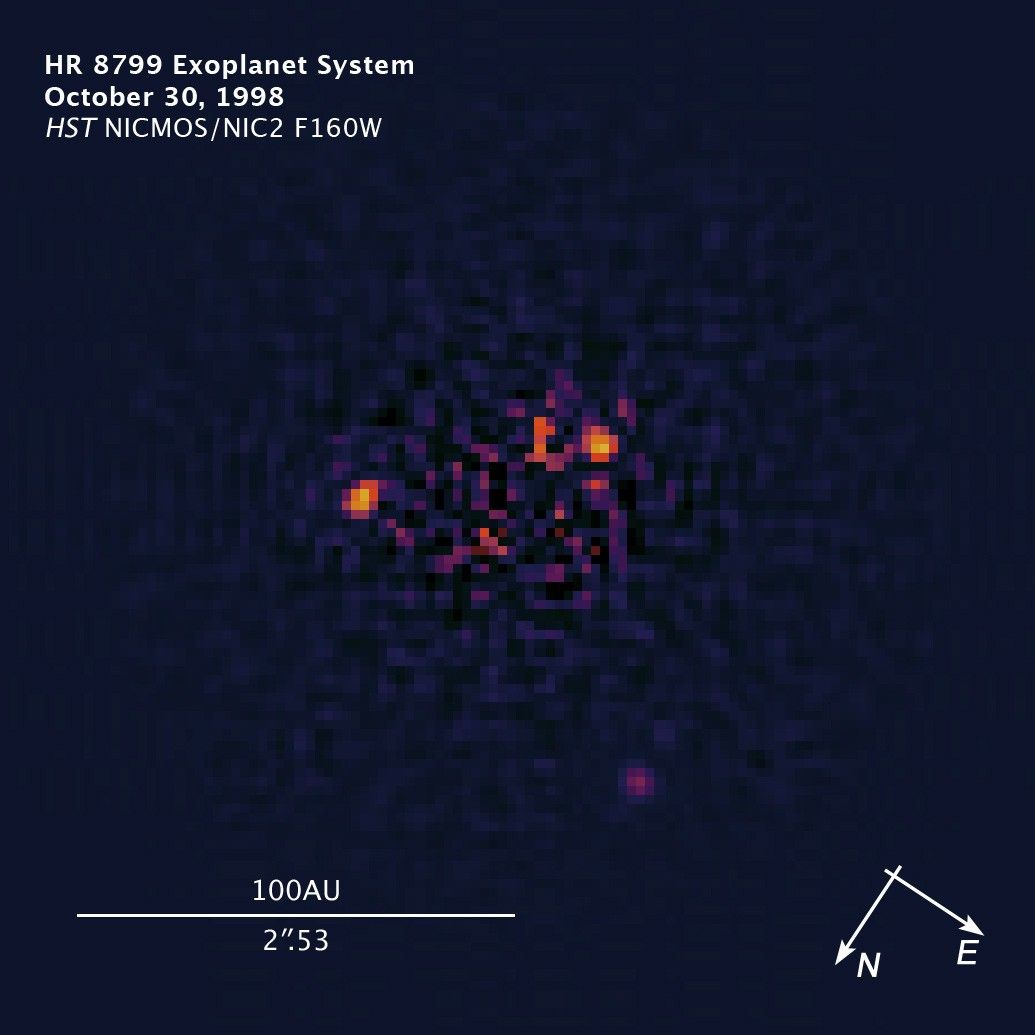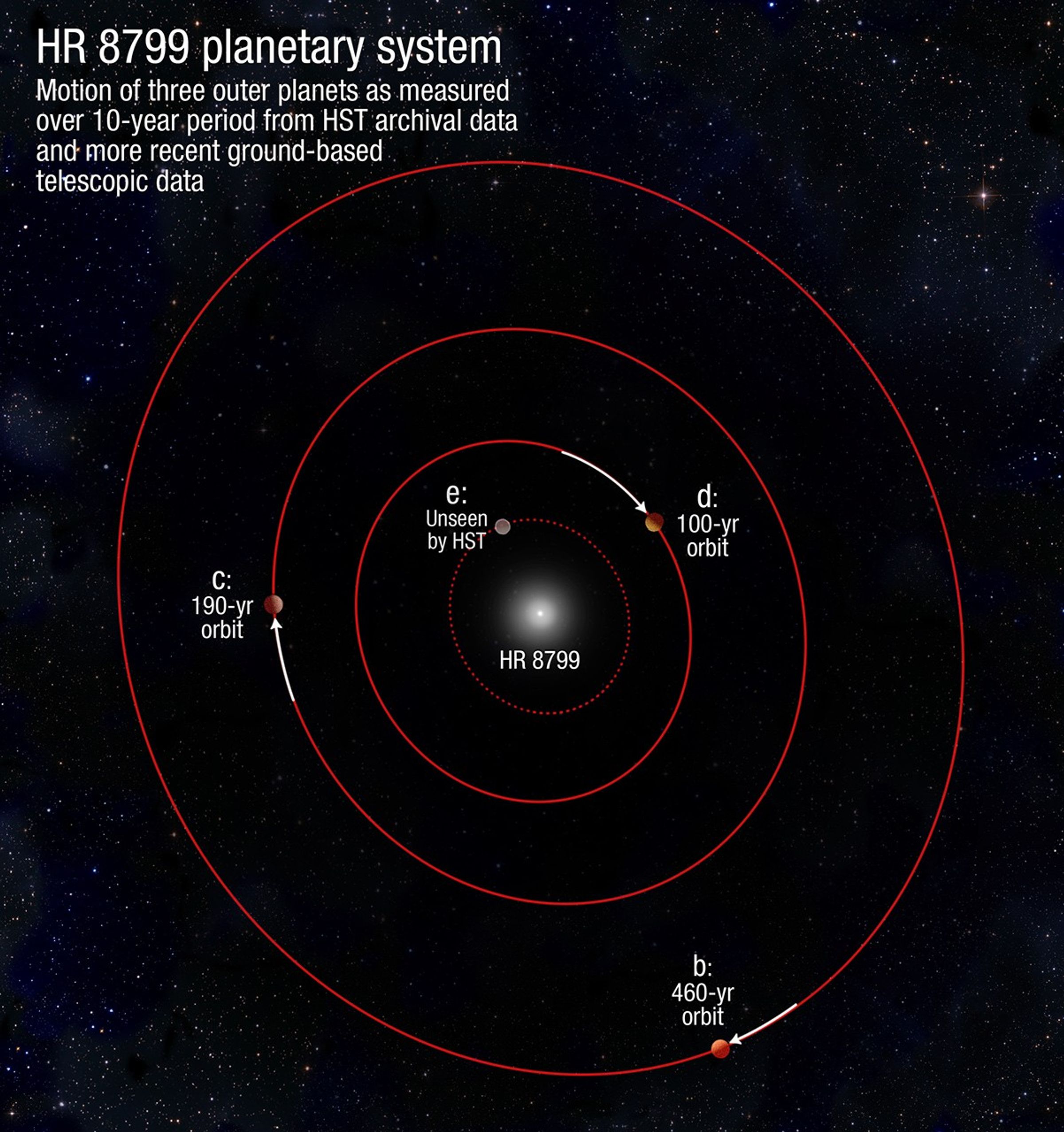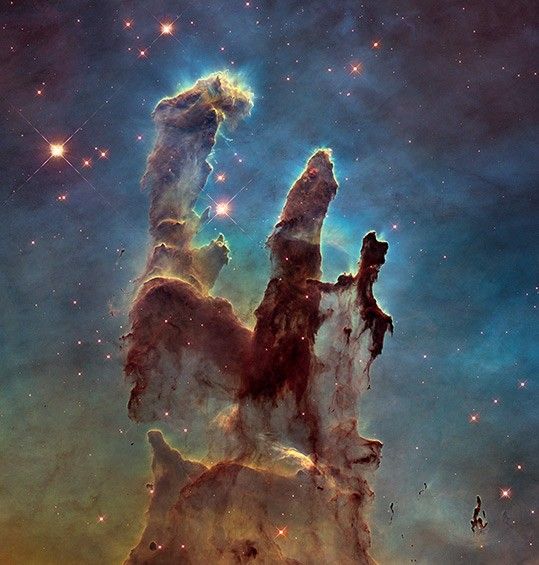1 min read
Positional Schematic of the Members of the HR 8799 Exoplanet System

This is an illustration of the HR 8799 exoplanet system based on the reanalysis of Hubble NICMOS data and ground-based observations. The positions of the star and the orbits of the four known planets are shown schematically. The sizes of the dots are not to scale with the planet's true sizes. The three outermost planets, b, c, and d, are detected in both the NICMOS and ground-based data. A fourth, inner planet, e, was detected in ground-based observations. The orbits appear elongated because of a slight tilt of the plane of the orbits relative to our line of sight. The size of the HR 8799 planetary system is comparable to our solar system, as indicated by the orbit of Neptune, shown to scale.
Extended Description and Image Alt Text
Extended Description
This diagram depicts the positions of four exoplanets around star HR 8799.
In the bottom left corner is a label that reads “HR 8799 planet orbits.”
In the bottom right corner is a white ellipse that is tilted relative to the viewer. Its widest point is a little larger than a quarter of the overall illustration. Text below the ellipse reads “Relative size of Neptune’s orbit.”
The center of the diagram shows four exoplanets orbiting about a concentric point. This point, represented by a white dot, is star HR 8799.
Immediately outside the white dot is a green oval, which outlines the planet’s elliptical orbit, with a red dot positioned at 11 o’clock. The red dot is labeled “e.” This represents the orbit of exoplanet e of the HR 8799 system, which is about half the relative orbit of Neptune.
The next orbit is represented by a slightly larger red oval with a pink dot positioned at two o’clock. The pink dot is labeled “d.” The orbit of exoplanet d is about the same size as the relative orbit of Neptune.
Beyond the orbit of exoplanet d is another slightly wider red oval with its own pink dot. The pink dot on this orbit, which is near nine o’clock, is labeled “c.” Its orbit is about twice the relative orbit of Neptune.
The outermost and widest orbit is also represented by a red oval with its own pink dot positioned near five o’clock. The dot is labeled “b.” The orbit of b around star HR 8799 is almost three times the relative size of Neptune’s orbit.
Image Alt Text
Positional Schmatic of the Members of the HR 8799 Exoplanet System
- Release DateOctober 6, 2011
- Science ReleaseAstronomers Find Elusive Planets in Decade-Old Hubble Data
- Credit
Related Images & Videos

NICMOS Image of HR 8799 Planetary System
This is an image of the star HR 8799 taken by Hubble's Near Infrared Camera and Multi-Object Spectrometer (NICMOS) in 1998. A mask within the camera (coronagraph) blocks most of the light from the star. In addition, software has been used to digitally subtract more starlight....
Share
Details
Claire Andreoli
NASA’s Goddard Space Flight Center
Greenbelt, Maryland
claire.andreoli@nasa.gov






